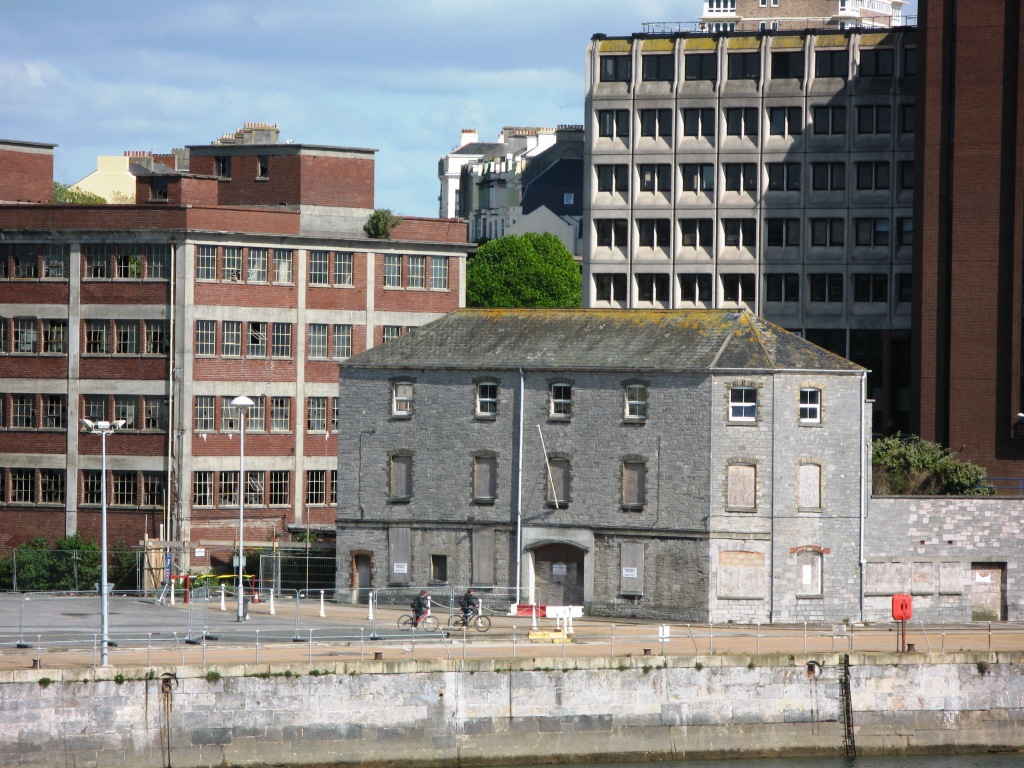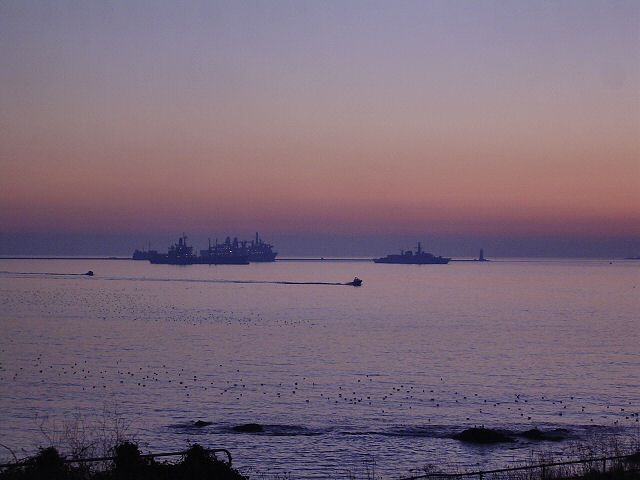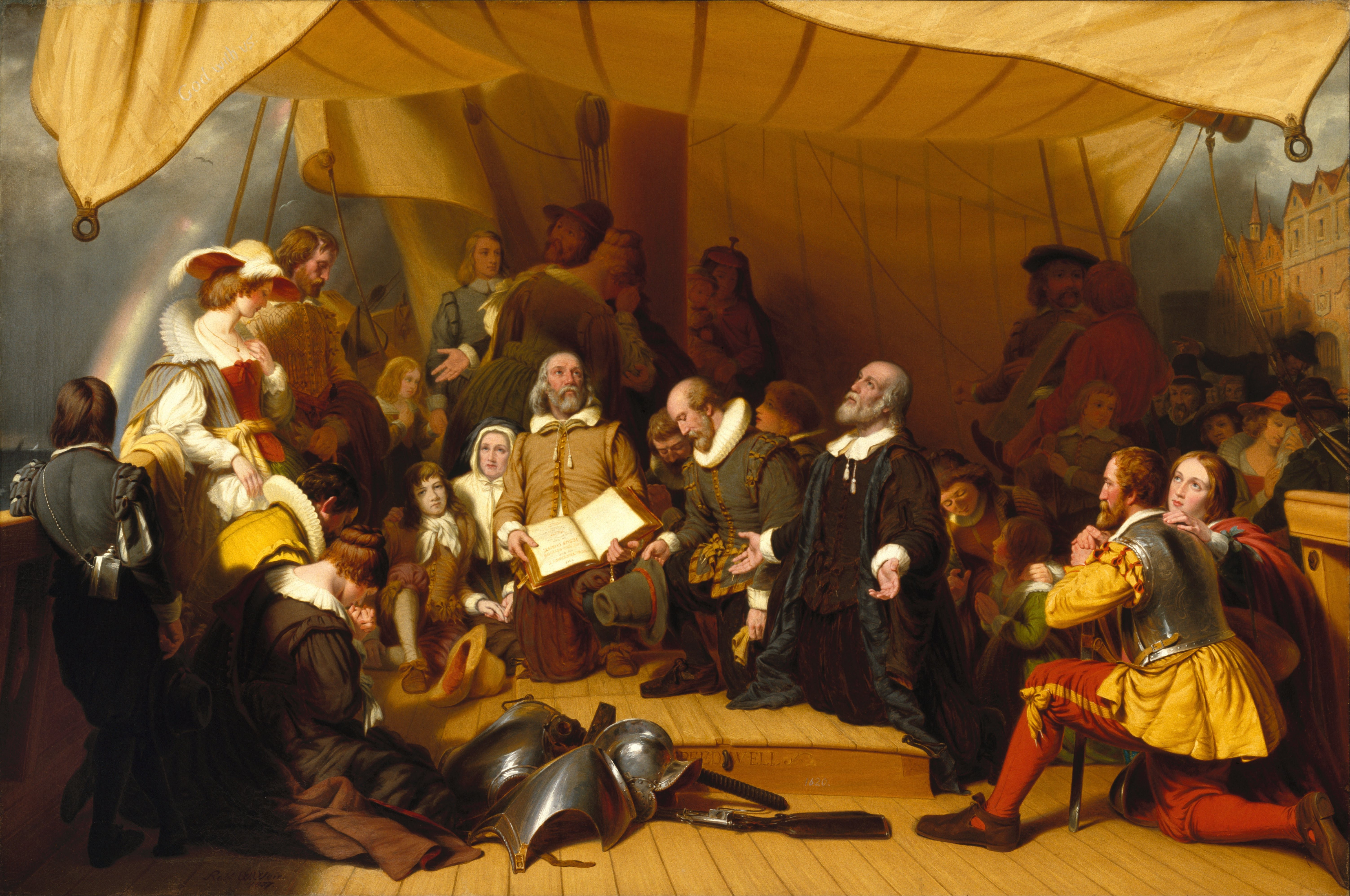|
Duke Of Cornwall Hotel
The Duke of Cornwall Hotel is a hotel in the city of Plymouth, Devon, England. It opened in 1865 to cater for the increasing number of travellers who were coming to the region by rail and sea. The hotel survived the World War II Plymouth Blitz without damage, and was the venue for regular functions throughout the war. In the 1970s and early 1980s it was threatened with closure but, helped by poet laureate John Betjeman's praise for its architecture, it was saved by a major refurbishment. History The first steam train arrived at the now-closed Plymouth Millbay railway station on 2 April 1849. The increase of first class travel to the area led to an increasing demand for luxury accommodation and once the need for a quality hotel was recognised, a group of railway directors were appointed as the hotel's board of directors. They selected the architect C. Forster Hayward, who later designed the Swyddfa'r Sir in Aberystwyth to the same style but on a smaller scale. The builder w ... [...More Info...] [...Related Items...] OR: [Wikipedia] [Google] [Baidu] |
Plymouth
Plymouth () is a port city and unitary authority in South West England. It is located on the south coast of Devon, approximately south-west of Exeter and south-west of London. It is bordered by Cornwall to the west and south-west. Plymouth's early history extends to the Bronze Age when a first settlement emerged at Mount Batten. This settlement continued as a trading post for the Roman Empire, until it was surpassed by the more prosperous village of Sutton founded in the ninth century, now called Plymouth. In 1588, an English fleet based in Plymouth intercepted and defeated the Spanish Armada. In 1620, the Pilgrim Fathers departed Plymouth for the New World and established Plymouth Colony, the second English settlement in what is now the United States of America. During the English Civil War, the town was held by the Roundhead, Parliamentarians and was besieged between 1642 and 1646. Throughout the Industrial Revolution, Plymouth grew as a commercial shipping port, handling ... [...More Info...] [...Related Items...] OR: [Wikipedia] [Google] [Baidu] |
Millbay Docks
Millbay, also known as Millbay Docks, is an area of dockland in Plymouth, Devon, England. It lies south of Union Street, between West Hoe in the east and Stonehouse in the west. The area is currently subject to a public-private regeneration creating new homes, business premises, marina, a 1000-pupil school and opening up the waterfront to greater public access. Early history Mill Bay was a natural inlet to the west of the Hoe. It was originally far more extensive than the current docks because it included the "Sourepool" which was a tidal salt-marsh that lay roughly along the line of today's Union Street. The Sourepool was separated from the bay by a narrow neck across which tidal mills were built, probably in the 12th century. These mills were operated by the Priors of Plympton who collected the income from grinding corn. By the mid 15th century, the mills were owned and let by the Corporation of Plymouth; the lease was sold to Francis Drake in 1573. In 1591–92 Drake bui ... [...More Info...] [...Related Items...] OR: [Wikipedia] [Google] [Baidu] |
New Palace Theatre
The Palace Theatre is a disused theatre in Union Street, Plymouth, Devon in south west England. It opened in 1898 as a music hall but was damaged by fire only three months after opening, and was re-opened in 1899 as the New Palace Theatre of Varieties. In 1961 it was converted to a bingo hall, but later reverted to being a theatre as the Palace Theatre until 1983, when it became The Academy disco and finally operated as the Dance Academy, before being closed after Class A drugs were found on the premises. The theatre was built in the Flemish Renaissance style, with the interior in an Art Nouveau style, with nautical features. It is now deteriorating while an agreement is reached about its future and it is listed as an "at risk" building. It is a grade II* listed building. Opening The theatre was built in 1898 on the corner of Union Street and Phoenix Street, for the joint owners, United Counties Theatres Limited and Horace and Lechmere Livermore (the "Livermore Brothers"), to ... [...More Info...] [...Related Items...] OR: [Wikipedia] [Google] [Baidu] |
Webster Booth
Webster Booth (21 January 1902 – 21 June 1984) was an English tenor, best remembered as the duettist partner of Anne Ziegler. He was also one of the finest tenors of his generation and was a distinguished oratorio soloist. He was a chorister at Lincoln Cathedral (1911–1915) and made his professional stage debut with the D'Oyly Carte Opera Company, where he performed from 1923 to 1927. He made his West End Debut in ''The Three Musketeers'' in 1930. He began recording for HMV in 1929 and made over 500 solo recordings and many duet recordings with Anne Ziegler. He and Ziegler embarked on their famous duettist variety act in 1940. They starred in three musical plays, "The Vagabond King" (1943), "Sweet Yesterday" (1945) and toured in "And so to Bed" (1953–1954) and appeared in several musical films in the 1940s. They made frequent broadcasts together. In 1948 they went on a successful concert tour of New Zealand and Australia. When musical tastes changed in the 1950s they de ... [...More Info...] [...Related Items...] OR: [Wikipedia] [Google] [Baidu] |
Anne Ziegler
Anne Ziegler (22 June 1910 – 13 October 2003) was an English singer, known for her light operatic duets with her husband Webster Booth. The pair were known as the "Sweethearts in Song" and were among the most famous and popular British musical acts of the 1940s. Life and career She was born Irené Frances Eastwood in the Sefton Park area of Liverpool, and attended The Belvedere School. She trained as a classical pianist, and studied singing. In 1933 she began singing professionally as a soprano, changing her name to Anne Ziegler when she made her West End stage debut in 1934, in the chorus of ''By Appointment''. The same year, she was chosen to play Marguerite in a film, ''The Faust Fantasy''. While making the film she met and fell in love with the tenor Webster Booth, who was married at the time. In 1937, credited as Anne Booth, she appeared on Broadway as Sylvia Laurence in Arthur Schwartz's ''Virginia'' and, in 1938, Booth divorced his second wife and married Ziegler. ... [...More Info...] [...Related Items...] OR: [Wikipedia] [Google] [Baidu] |
Ballroom
A ballroom or ballhall is a large room inside a building, the primary purpose of which is holding large formal parties called balls. Traditionally, most balls were held in private residences; many mansions and palaces, especially historic mansions and palaces, contain one or more ballrooms. In other large houses, a large room such as the main drawing room, long gallery, or hall may double as a ballroom, but a good ballroom should have the right type of flooring, such as hardwood flooring or stone flooring (usually marble or stone). In later times the term ballroom has been used to describe nightclubs where customers dance, the Top Rank Suites in the United Kingdom for example were also often referred to as ballrooms. The phrase "having a ball" has grown to encompass many events where person(s) are having fun, not just dancing. Ballrooms are generally quite large, and may have ceilings higher than other rooms in the same building. The large amount of space for dancing, as well ... [...More Info...] [...Related Items...] OR: [Wikipedia] [Google] [Baidu] |
HMNB Devonport
His Majesty's Naval Base, Devonport (HMNB Devonport) is one of three operating bases in the United Kingdom for the Royal Navy (the others being HMNB Clyde and HMNB Portsmouth) and is the sole nuclear repair and refuelling facility for the Royal Navy. The largest naval base in Western Europe, HMNB Devonport is located in Devonport, in the west of the city of Plymouth, England. The base began as Royal Navy Dockyard in the late 17th century, but shipbuilding ceased at Devonport in the early 1970s, although ship maintenance work has continued. The now privatised maintenance facilities are operated by Babcock International Group, who took over the previous owner Devonport Management Limited (DML) in 2007. DML had been running the Dockyard since privatisation in 1987. From 1934 until the early 21st century the naval barracks on the site was named HMS ''Drake'' (it had previously been known as HMS ''Vivid'' after the base ship of the same name). The name HMS ''Drake'' and its c ... [...More Info...] [...Related Items...] OR: [Wikipedia] [Google] [Baidu] |
Plymouth Hoe
Plymouth Hoe, referred to locally as the Hoe, is a large south-facing open public space in the English coastal city of Plymouth. The Hoe is adjacent to and above the low limestone cliffs that form the seafront and it commands views of Plymouth Sound, Drake's Island, and across the Hamoaze to Mount Edgcumbe in Cornwall. The name derives from the Anglo-Saxon word ''hoh'', a sloping ridge shaped like an inverted foot and heel (a term that survives in a few other placenames, notably Sutton Hoo). History Until the early 17th century large outline images of the giants Gog and Magog (or Goemagot and Corineus) had for a long time been cut into the turf of the Hoe exposing the white limestone beneath. These figures were periodically re-cut and cleaned. No trace of them remains today, but this likely commemorates the Cornish foundation myth, being the point – ''Lam Goemagot'', – from which the Giant was cast into the sea by the hero Corineus. Plymouth Hoe is perhaps best known for ... [...More Info...] [...Related Items...] OR: [Wikipedia] [Google] [Baidu] |
Tinside Lido
Tinside Lido is a 1935 Art Deco lido in the city of Plymouth in south-west England. It is sited beside Plymouth Sound and is overlooked by Plymouth Hoe and Smeaton's Tower. The lido is open in the summer months between May and September. History The lido was designed in 1935 by John Wibberley. It was officially opened on 2 October 1935 A victim of declining popularity and neglect, the lido closed in 1992 but a vociferous local campaign led to a renovation, at a cost of £3.4 million, and Grade II Listed Building status in 1998. The facility re-opened to the public in 2005. During refurbishment the three tidal pools, pontoons and diving boards were all removed or filled in. A lift and hoist were added in 2009 for disabled access. Description The lido design is a semicircle of diameter. The site comprises a concrete pool, counter-fort outer walls, reinforced concrete inner walls, duct walls and floors. The main building is reinforced with concrete and has some stone retaining w ... [...More Info...] [...Related Items...] OR: [Wikipedia] [Google] [Baidu] |
Pilgrim Fathers
The Pilgrims, also known as the Pilgrim Fathers, were the English settlers who came to North America on the ''Mayflower'' and established the Plymouth Colony in what is today Plymouth, Massachusetts, named after the final departure port of Plymouth, Devon. Their leadership came from the religious congregations of Brownists, or Separatist Puritans, who had fled religious persecution in England for the tolerance of 17th-century Holland in the Netherlands. They held many of the same Puritan Calvinist religious beliefs but, unlike most other Puritans, they maintained that their congregations should separate from the English state church, which led to them being labeled Separatists (the word "Pilgrims" was not used to refer to them until several centuries later). After several years living in exile in Holland, they eventually determined to establish a new settlement in the New World and arranged with investors to fund them. They established Plymouth Colony in 1620, where they erected ... [...More Info...] [...Related Items...] OR: [Wikipedia] [Google] [Baidu] |
Mayflower Steps
The Mayflower Steps are close to the site in the Barbican area of Plymouth, south-west England, from which the Pilgrim Fathers The Pilgrims, also known as the Pilgrim Fathers, were the English settlers who came to North America on the ''Mayflower'' and established the Plymouth Colony in what is today Plymouth, Massachusetts, named after the final departure port of Plymo ... are believed to have finally left England aboard the ''Mayflower'' on 6 September 1620, before crossing the Atlantic Ocean to settle in North America. The traditional site of their disembarkation in North America is Plymouth Rock. Description The steps today consist of a commemorative portico with Doric columns of Portland stone that was built in 1934, and a small platform over the water with a brushed steel rail and a shelf with nautical bronze artwork and historical information. It is on a small pier that is believed to have been built in the 18th or 19th century when some very old houses that were ... [...More Info...] [...Related Items...] OR: [Wikipedia] [Google] [Baidu] |
Bing Crosby
Harry Lillis "Bing" Crosby Jr. (May 3, 1903 – October 14, 1977) was an American singer, musician and actor. The first multimedia star, he was one of the most popular and influential musical artists of the 20th century worldwide. He was a leader in record sales, radio ratings, and motion picture grosses from 1926 to 1977. He made over 70 feature films and recorded more than 1,600 songs. His early career coincided with recording innovations that allowed him to develop an intimate singing style that influenced many male singers who followed, such as Frank Sinatra, Perry Como, Dean Martin, Dick Haymes, Elvis Presley, and John Lennon. ''Yank'' magazine said that he was "the person who had done the most for the morale of overseas servicemen" during World War II. In 1948, American polls declared him the "most admired man alive", ahead of Jackie Robinson and Pope Pius XII. In 1948, ''Music Digest'' estimated that his recordings filled more than half of the 80,000 weekly hou ... [...More Info...] [...Related Items...] OR: [Wikipedia] [Google] [Baidu] |



.jpg)



